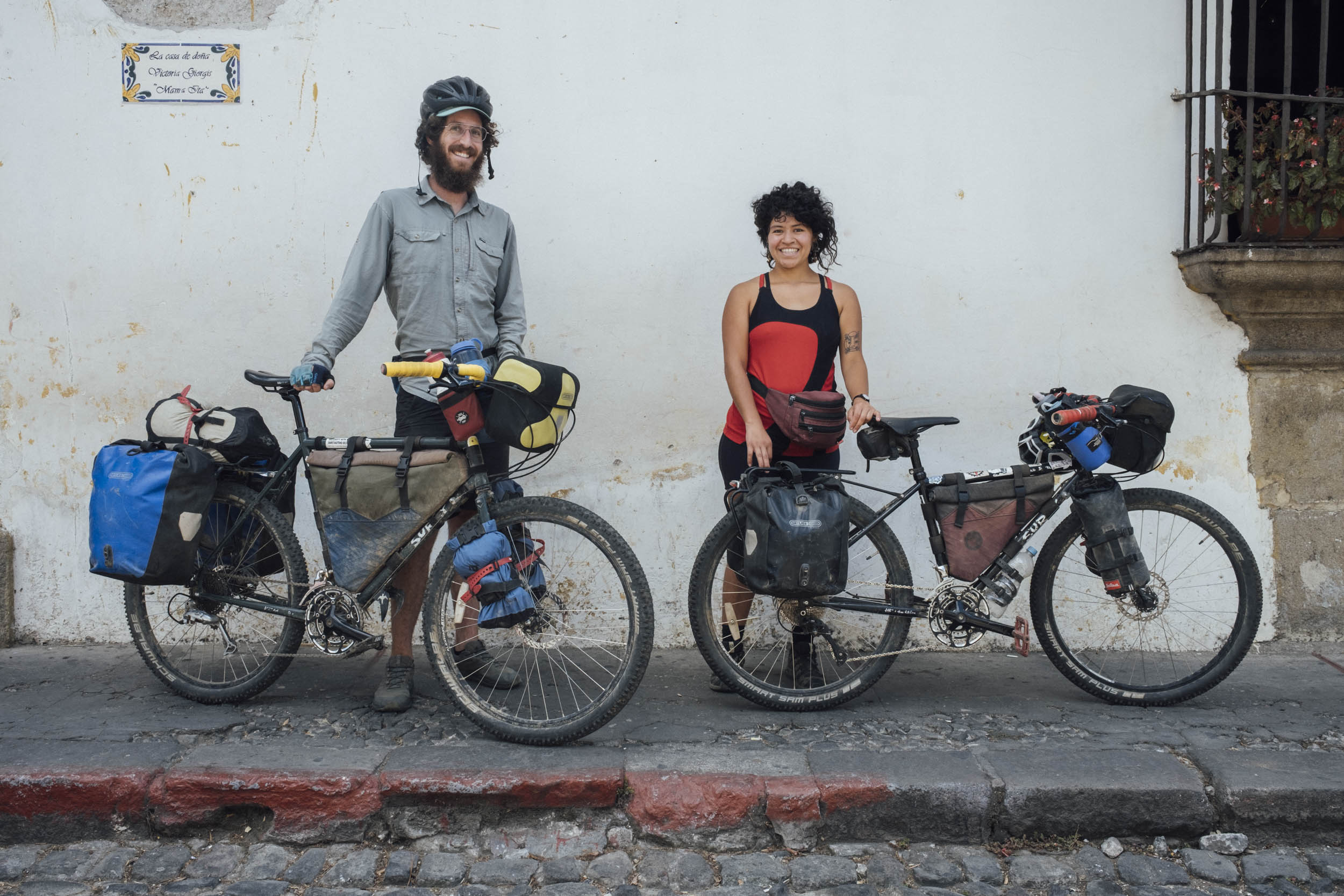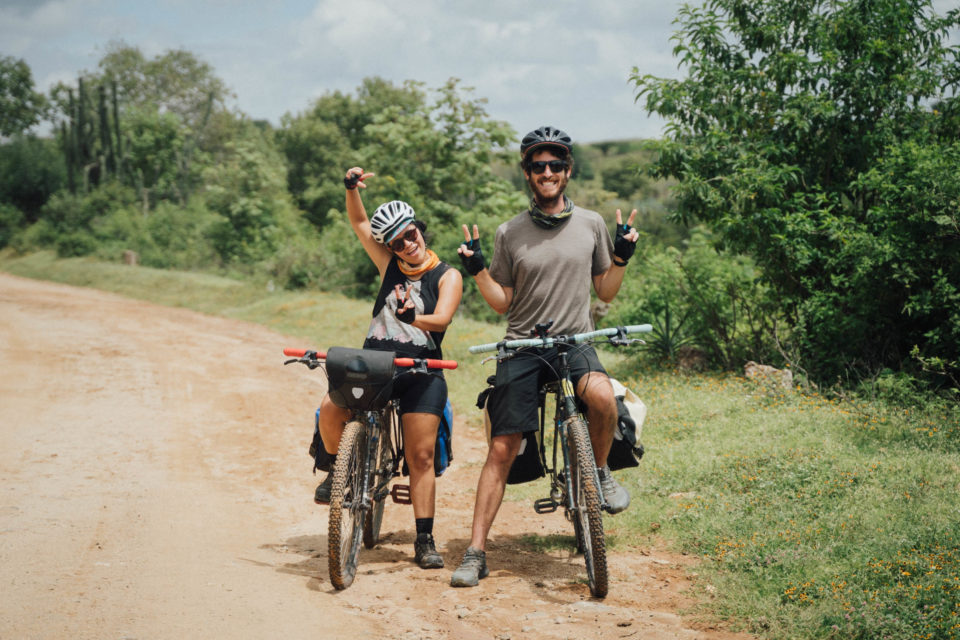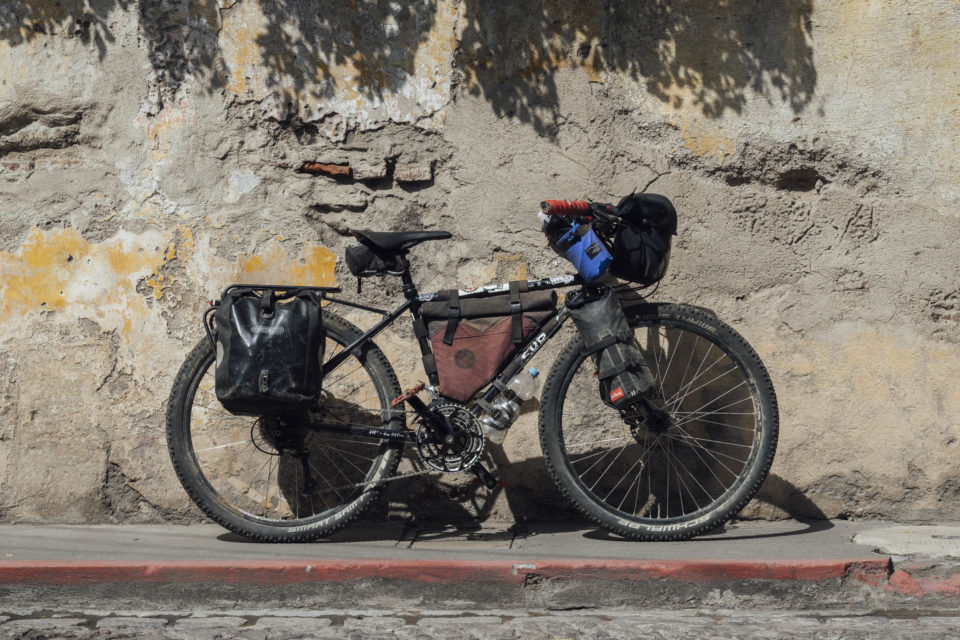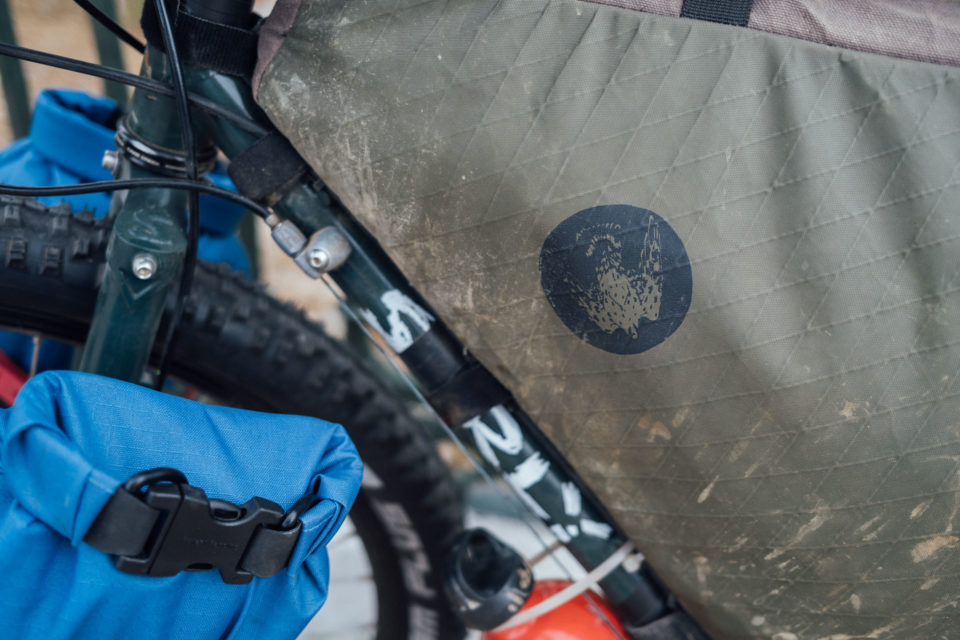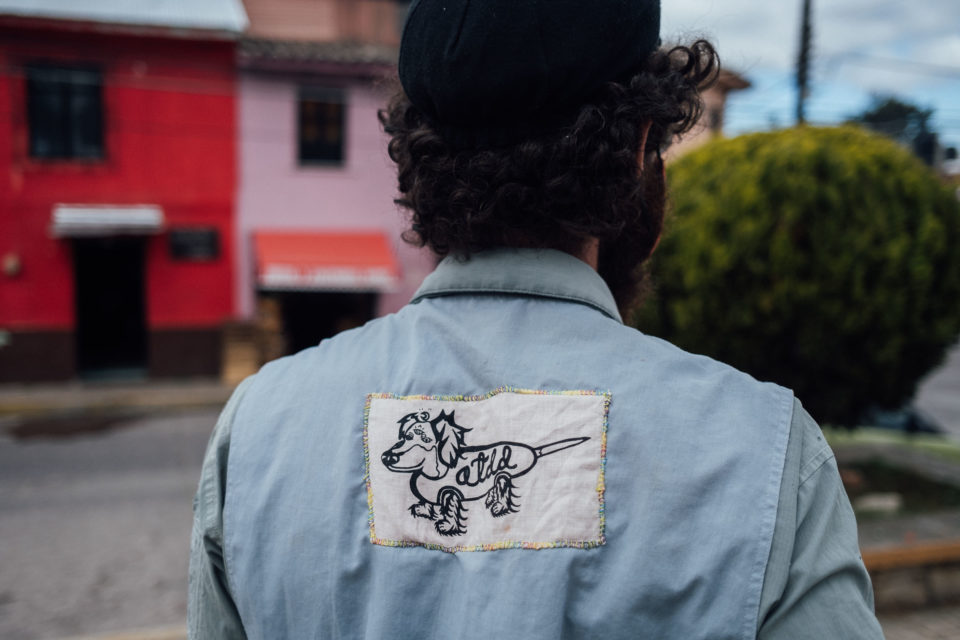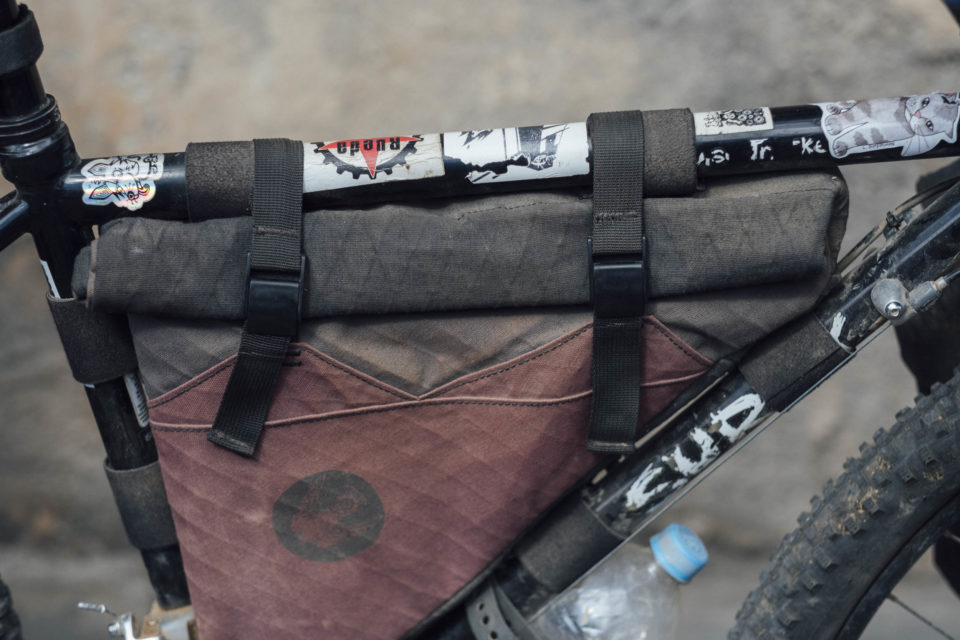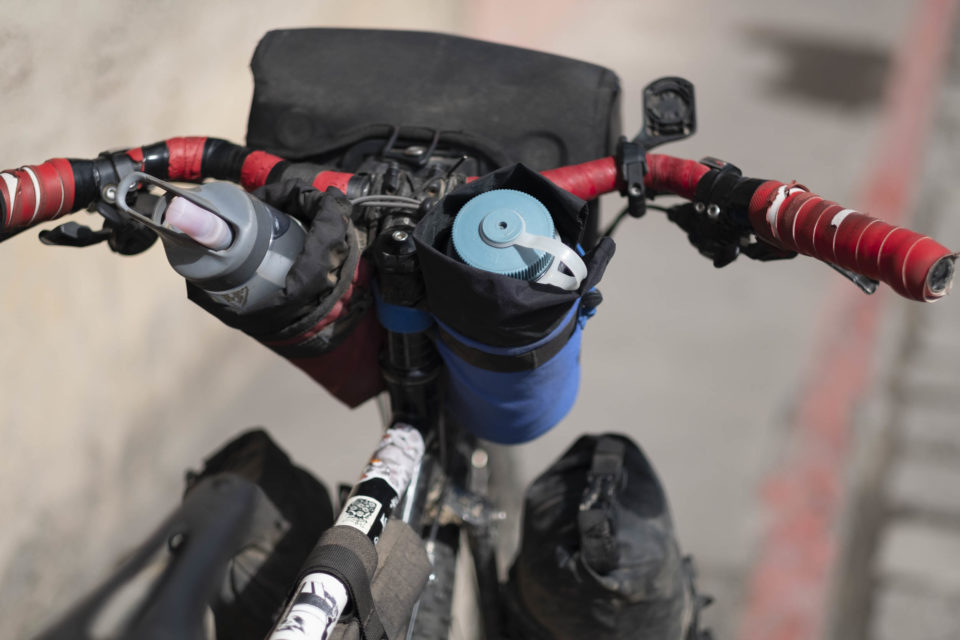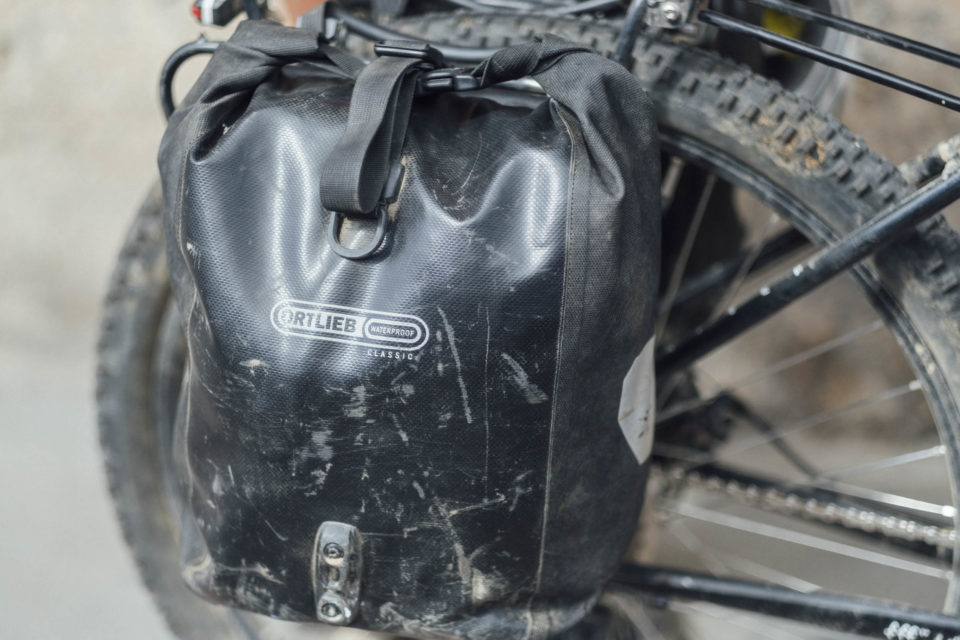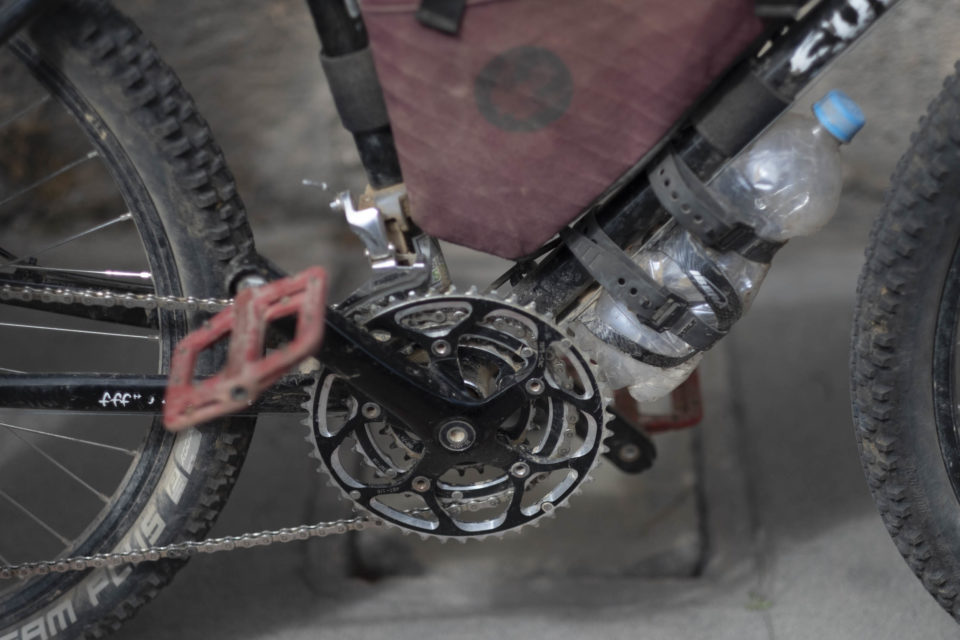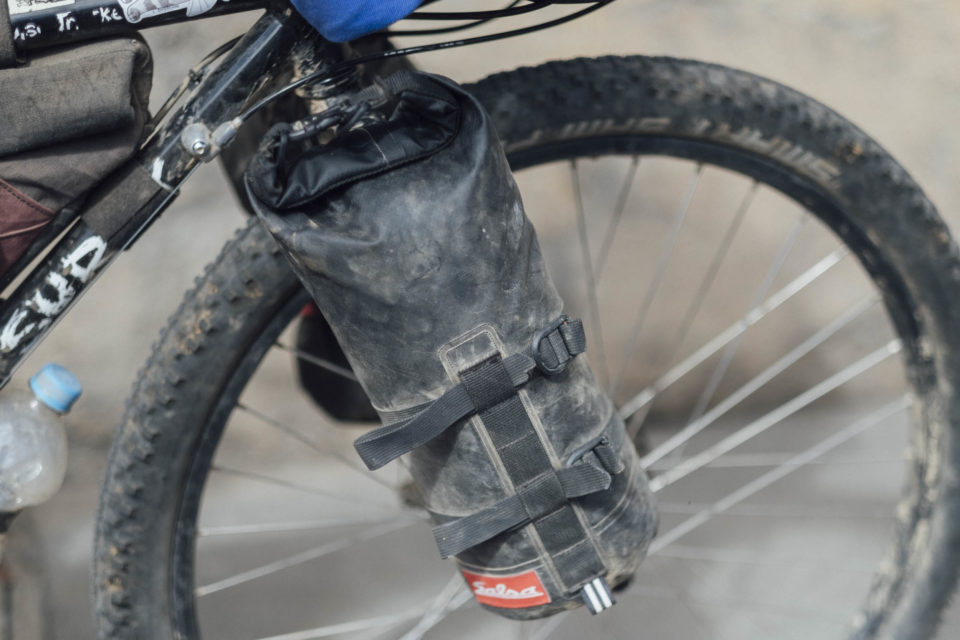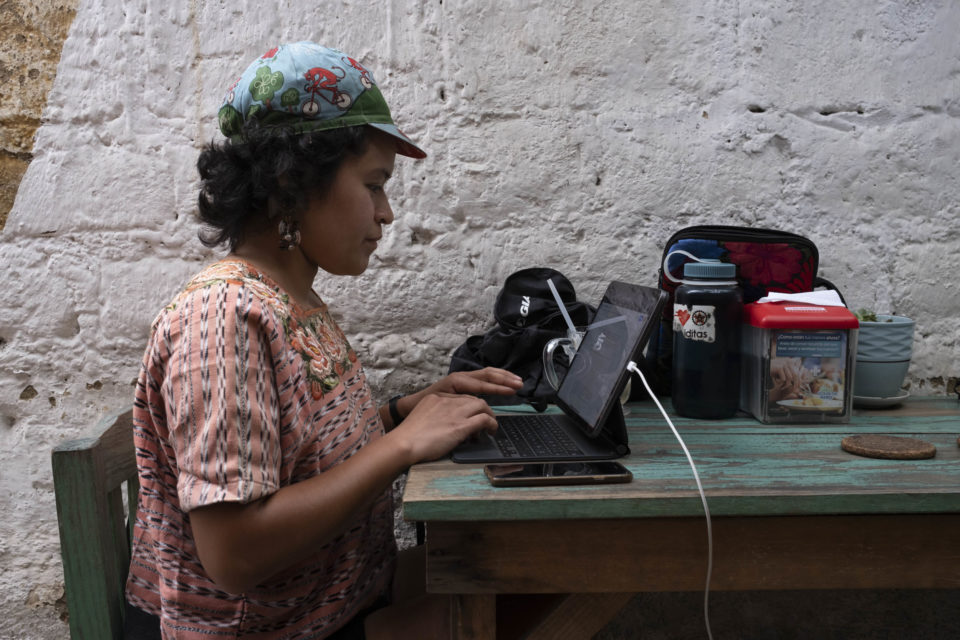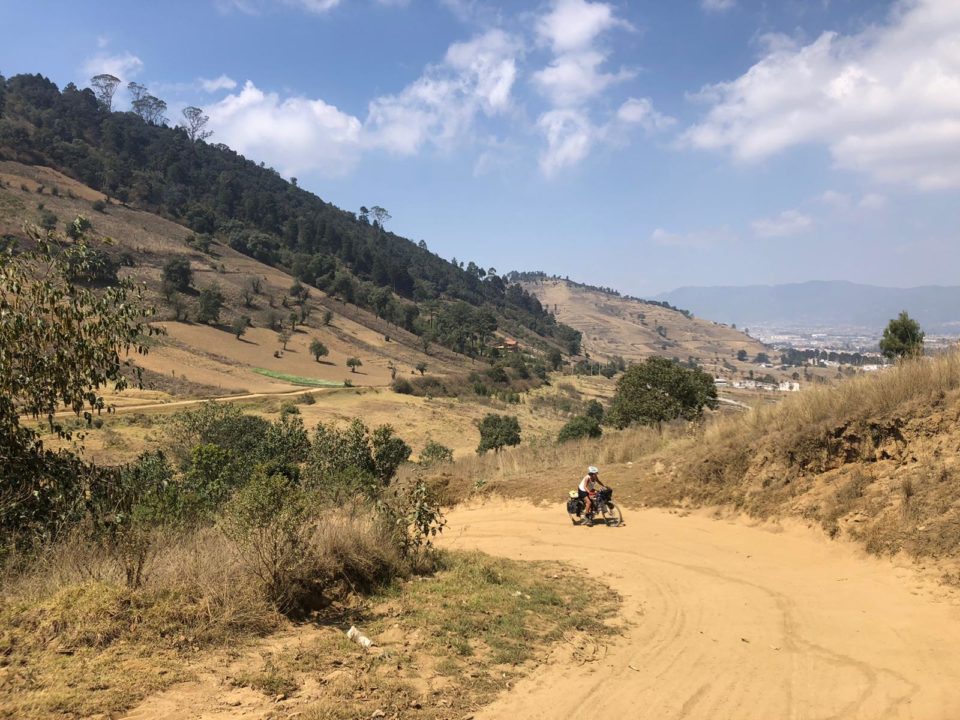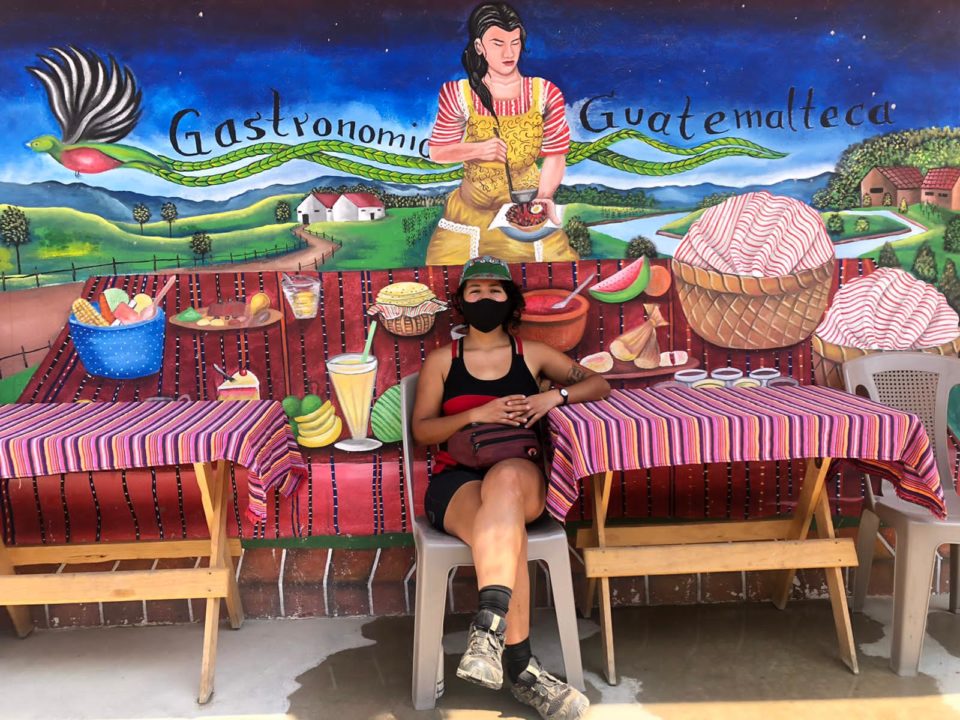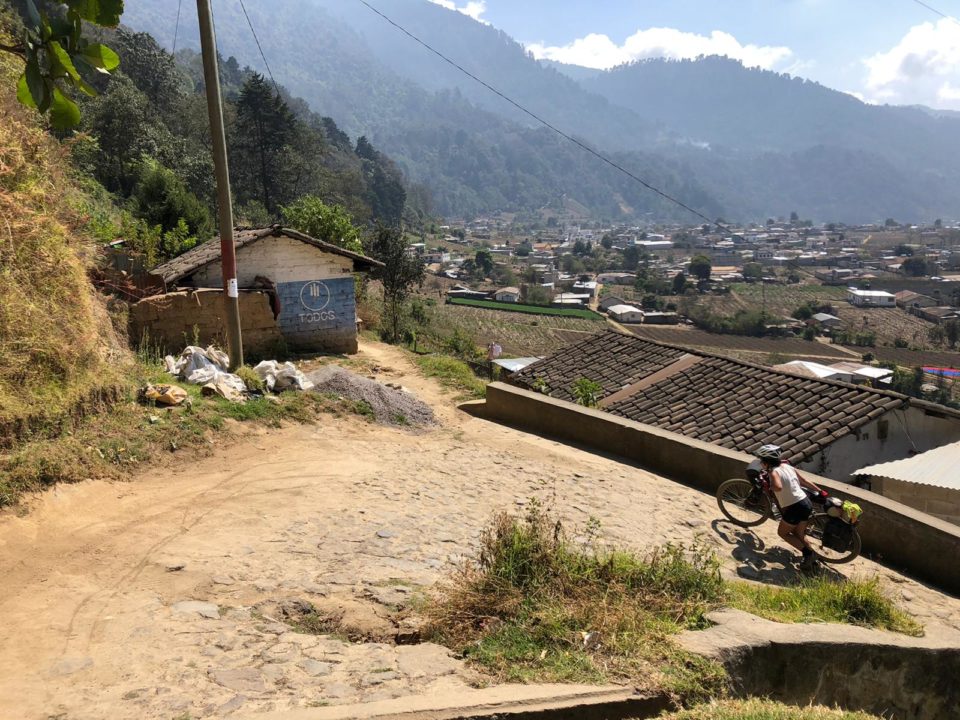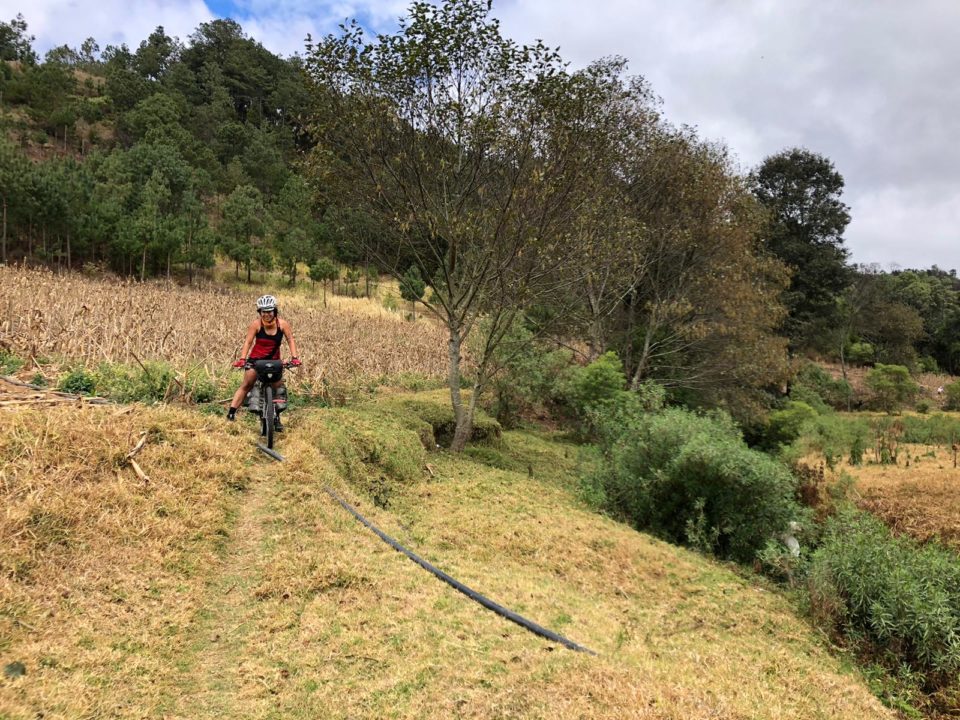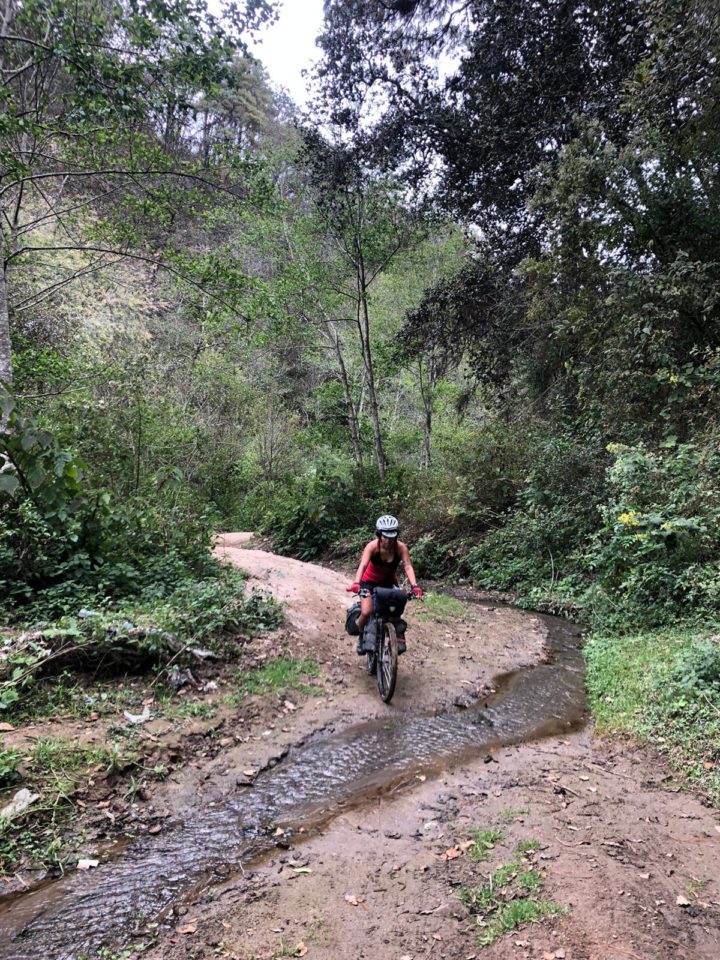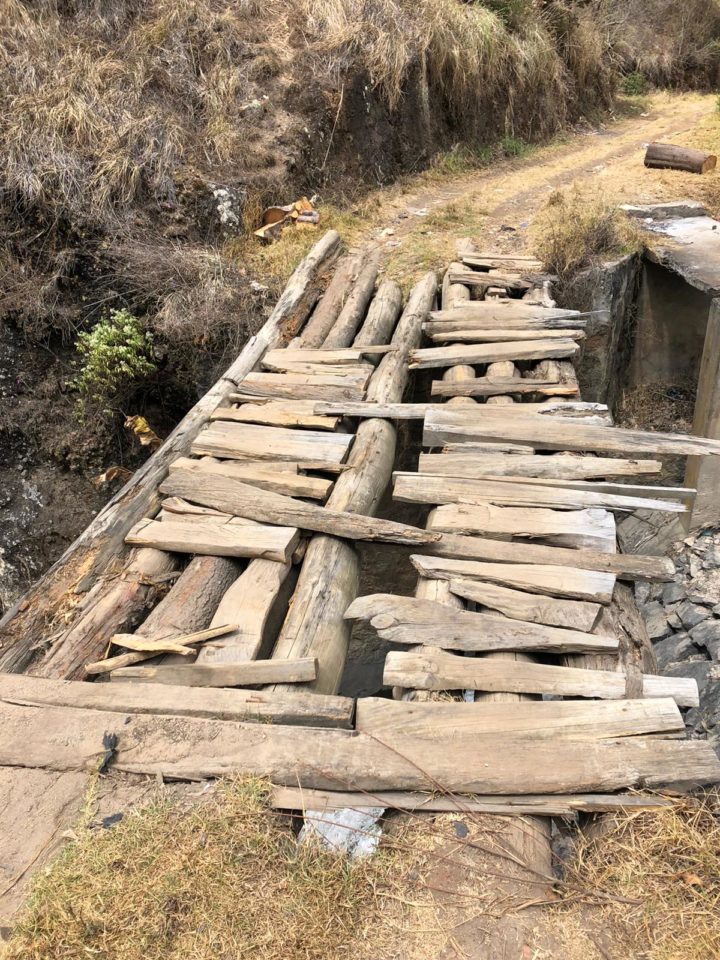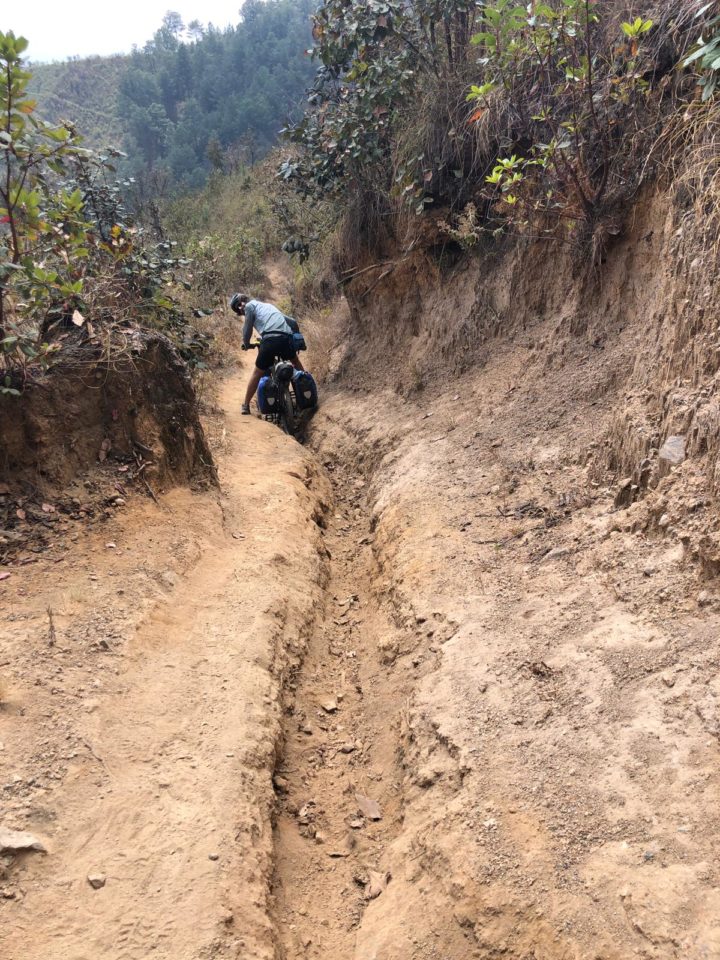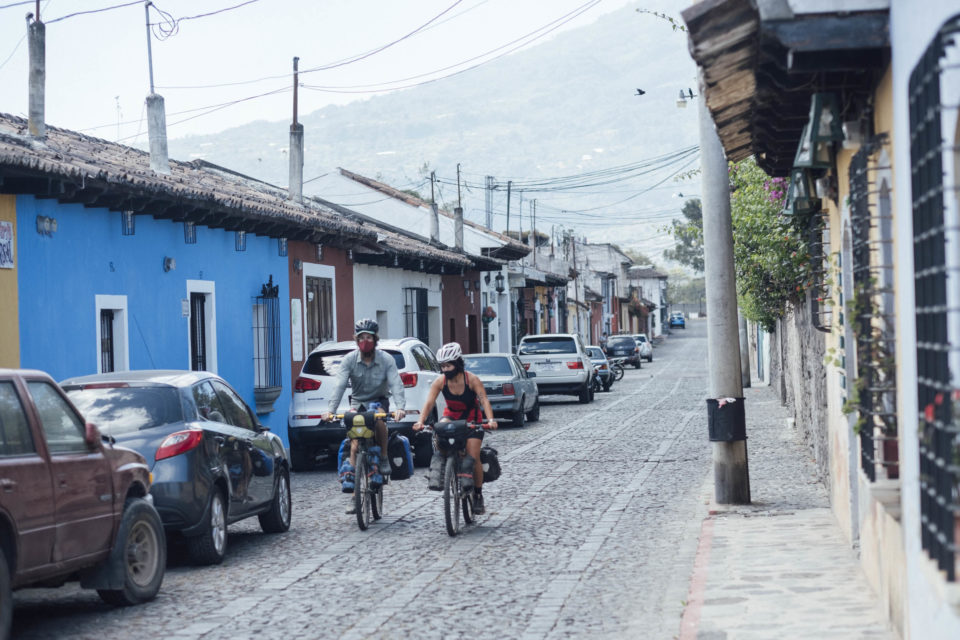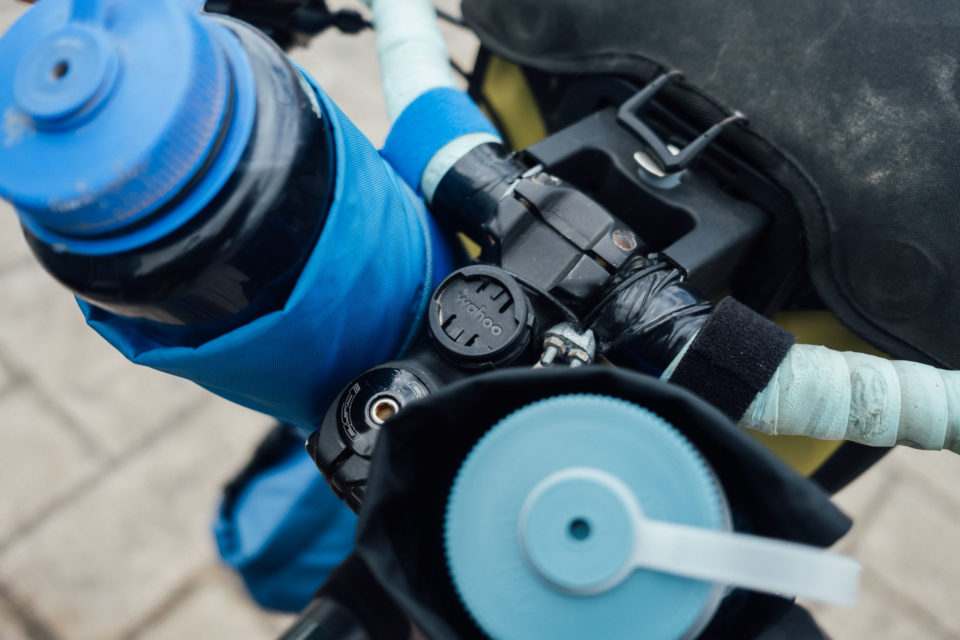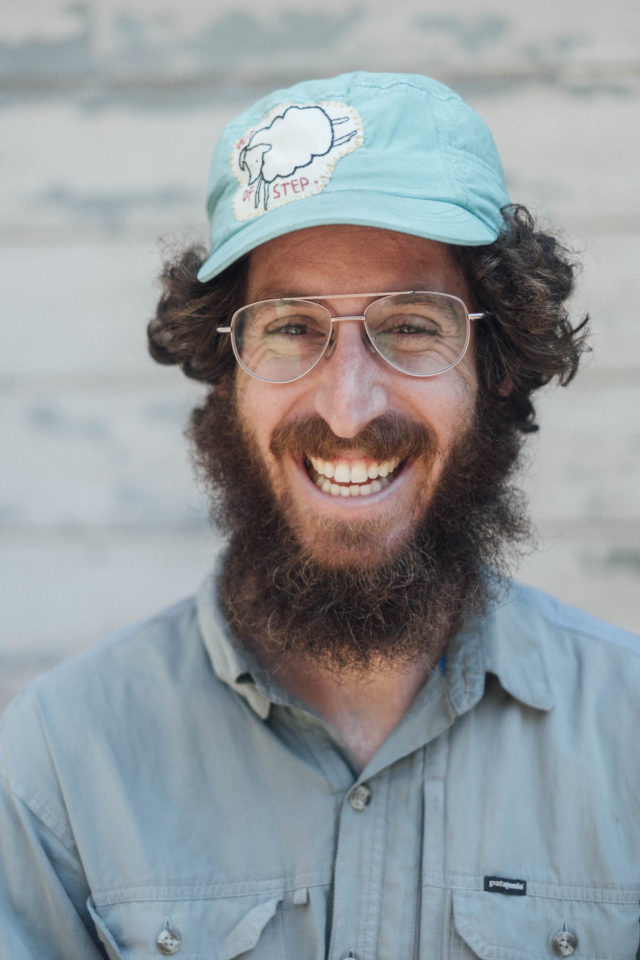Andrea and Jake’s Surly Disc Truckers: A Story of Migration
Share This
Last year, Andrea and Jake, a couple from El Salvador and the US, prepared to embark on a long-planned bike tour across Latin America just as a pandemic began taking hold. Discover what drove them south nonetheless and read about the issues facing those migrating north here, along with the story of their metamorphosis from bike tourers to bikepackers…
¡Hola! We’re Andrea Molina and Jake Dacks, from Kuscatan (present-day El Salvador) and occupied Tequesta, Taino, and Seminole land (Miami, Florida). We’re writing from Coatepeque Lake in El Salvador, a few months after having set off from Mexico City.
The story of our bikes is less about dream bikepacking rigs and more about realizing along the way that we’re more fond of the slow grind of the backroads of Mexico and Central America than the often hectic paved routes we’d initially set out to ride.
Our original plan was to make our way south, visiting Andrea’s friends dispersed throughout the Americas. Our bikes would be the vehicles, but the focus of the trip was to be the people. That all changed with COVID-19, and we left Mexico City with voice messages and teary-eyed emojis replacing in-person introductions and hugs. The days and hours we spent on the bikes became the thing that we were doing, rather than just the way to get to the thing. We started asking ourselves, “Why clench our jaws, cross our fingers, and hope our masks filter the truck exhaust when Mexico is full of ancient dirt roads connecting small towns with beautiful landscapes and rich cultures?”
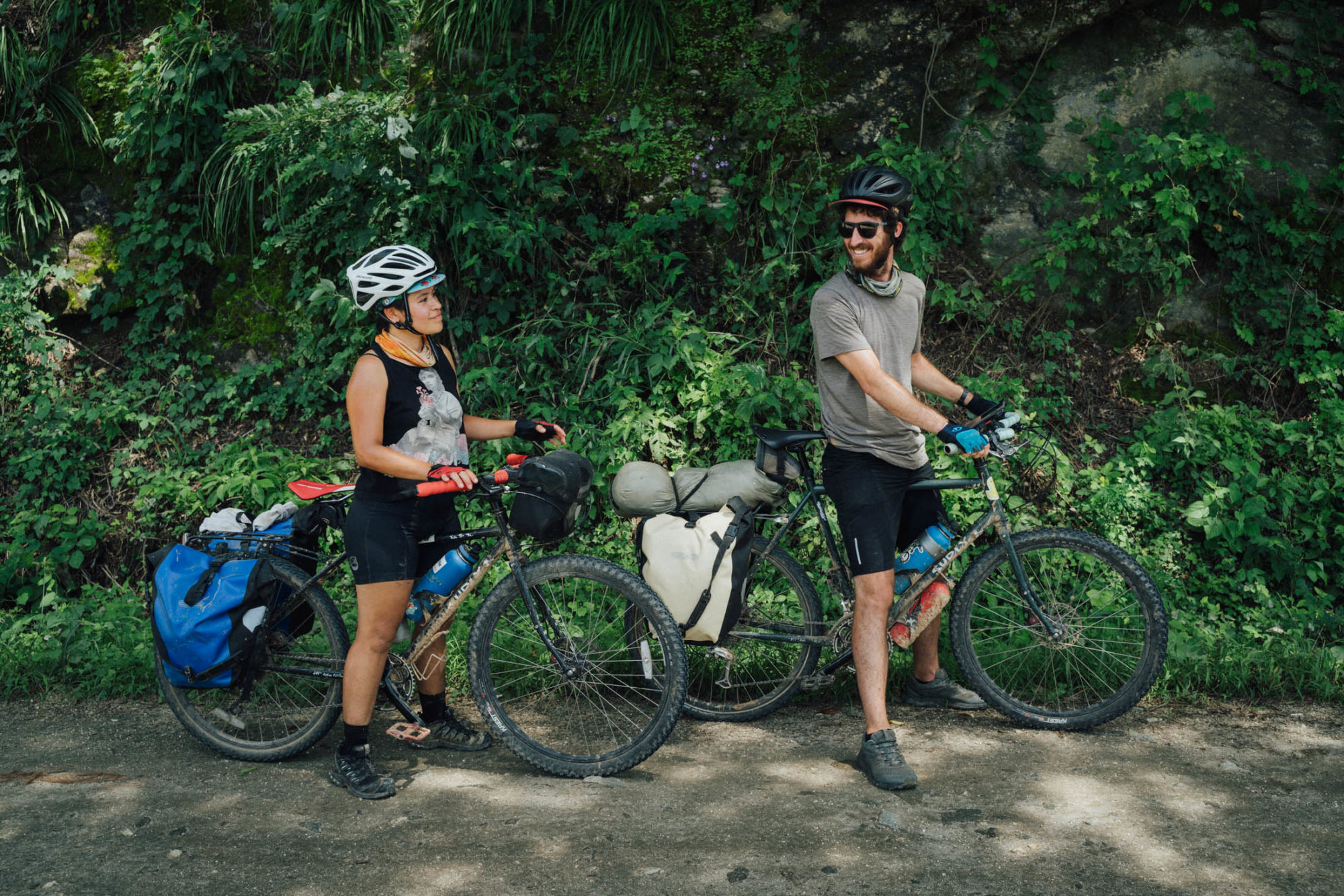
Let’s backtrack a little. Tell us about yourselves…
We lived in Washington, D.C., for the last seven years. Andrea was an early childhood educator, working in a Spanish immersion school, where she helped form one of the first unions at a charter school in the history of the city. She was, and remains, active in efforts around immigrant rights, language justice, and mutual aid. Andrea also played in a collective formed by immigrant musicians from all over Latin America that highlights the richness of Indigenous and African cultures through a musical tradition called Son Jarocho, from Veracruz, Mexico.
Jake worked on an educational urban farm, mostly trying to convince people that radishes taste good. For the last decade, he bounced back and forth between farms, community organizing, and Latin America solidarity work. That brought him to Central and South America a few times, and his Spanish is finally good enough that (some) people think he’s Argentinian. For both of us, building community and, through that, riding our bikes, has always been central to our lives.
How did you settle on the venerable Surly Disc Trucker?
Before this trip, Jake had done a few tours but still wanted to have a bike he could take out with his roadie friends. One of them sold him a 2012 26” Disc Trucker for a great price. Andrea learned to ride a bike sometime in her twenties through hand-me-downs, and she had never ridden a bike that properly fit her. Being 4’11, neither of us knew enough to look beyond the smallest touring bike frame she could easily get her hands on (42cm!)… so she wound up on the same bike too. Plus, we figured we could pack a bit lighter if we could share replacement parts.
What were your reasons behind leaving the US in the midst of a pandemic?
It has been a strange and precaution-laden time to be traveling, but we found ourselves in an odd situation last summer. Andrea’s U.S. visa was expiring—which is unfortunately not an odd occurrence for Central Americans in the United States—and we had both already given notice at our jobs. Despite having recently gotten married, we wouldn’t have been allowed to stay in the country together.
Back in June, only a handful of countries were allowing tourists in, and El Salvador required a month-long quarantine in overcrowded quarantine centers. At the time, the El Salvadorian government’s management of the pandemic was so bad that families and friends of people in the centers had to organize amongst themselves to bring them basic resources like food and toilet paper. In light of all this, we made the difficult decision to fly to Mexico, one of the only countries we could both be in, and take stock of our options.
After quarantining in the capital for two weeks, we decided to try riding south, keeping to ourselves and spending our nights camping in isolation. It was during this time that we quickly learned that traditional drop bar, bar-end shifter road touring setups weren’t much fun on the dirt roads we were keeping to. As it happens, we only made it to Oaxaca, following the Trans Mexico Norte, before we also realised that a more traditional quarantine regimen was preferred. While we sat in place for a number of months—waiting for cases in Oaxaca and neighbouring states to drop to levels low enough to again consider careful travel, as per government recommendations—we set to work picking Cass’s brain to turn our Truckers from heavily laden traditional tourers into more comfortable and fun bikepacking burros.

The biggest improvement was swapping out our drop handlebars for Soma Osprey bendy bars. They offered much more control off-road and with their 40-degree sweep, proved to be a lot more comfortable too – particularly for Andrea, who had struggled to get on with the ride position on steep and bumpy roads. We also cut a bunch of items from our pack list, allowing us to send two whole panniers each back to the US. And we swapped out our relatively slick touring tires for 2.1” Schwalbe Smart Sam Pluses, the biggest we could fit in our frames. Finally, we bought bikepacking framebags and stem bags from Peregrinus Equipment and Dos Erre, two makers sewing in Mexico City. As we waited, we honed our setups on dirt road day rides out of Oaxaca city. Not that we didn’t make small changes later, to make our bikes more liveable. In Quetzaltenango, Guatemala, Jake was able to track down a 9-speed 11-36T Megarange cassette, another modification that helped considerably when tackling the country’s improbably steep terrain.
While her relationship with El Salvador is complicated, Andrea has now made her way back “home.” As we biked across the bridge that connects Guatemala with El Salvador, she wept tears that were equal parts pride, fear, joy, and uncertainty.
How has the dilemma in your own lives affected your awareness of those migrating north?
Although Andrea’s visa issues initially pushed us out of the U.S. and COVID-19 completely changed our original plans, we’re constantly reminded of our incredible privilege as we cross paths with migrants making their way north on foot, after two devastating hurricanes flooded much of Central America.

While her relationship with El Salvador is complicated, Andrea has now made her way back “home.” As we biked across the bridge that connects Guatemala with El Salvador, she wept tears that were equal parts pride, fear, joy, and uncertainty. Our relatively short time here will hopefully serve as a means to reconnect with friends and family and begin the journey of healing some generational trauma that has weighed on her more than our original four-pannier setups ever could.
Having made the journey her way—slowly but surely, on a bike that is now uniquely hers—has forced Andrea to reflect on her path and privilege. Being one white U.S. citizen and one Salvadorian woman, we’ve also been forced to reckon with the often-inhumane treatment Central Americans face after the perilous journey to the U.S., while they show us unconditional kindness on their native lands. In just the last week, we’ve been offered camping space on people’s patios, free home-cooked meals, and guided tours of hidden hot springs. We’ve already visited more natural treasures – like thermal waterfalls and mountain lakes – than Andrea was able to visit when she lived here, having grown up poor in a post-civil-war society.
Given how much more time you’ve spent “not touring” than you originally planned, can you tell us about how you’ve made ends meet?
We both worked pretty “normal” jobs for a bunch of years before this trip. Also, living in group houses with lots of other people helped us keep the expenses down. So, we were able to save up a good chunk. With the pandemic, we’ve decided not to stay in people’s houses along the way, which means we wind up spending more money on housing when we can’t find a place to camp.
As a result, we’ve had to find some ways to make money. Andrea tutors some of her old students online, but now we make most of our money translating documents for social justice-oriented groups. We’ve recently worked on documents about water privatization in El Salvador and political prisoners in Chiapas, Mexico. As you can imagine, the content of those has contributed to the experience of biking through this region. When we see graffiti denouncing the police in a rural town in Mexico, we can imagine the torture and forced disappearances that are behind that sentiment. That feeling is especially chilling when we find out about government abuse after going through a place that we may have simply thought was just a pretty town.
Any future plans for changes to the bikes and what you’re carrying? Or are they pretty much dialed in now?
Our lighter setups have only left us yearning for more (or, rather, less). We’re covering more ground, ending the days with more energy, and, importantly, not missing that third pair of underwear.

We’re lucky to be expecting a couple of big Zeitgeist handlebar bags from Swift Industries, which, along with adding a dry bag to our rear racks and finally finding some ultralight second-hand down sleeping bags, should allow us to shed our remaining panniers. We’d already shifted to a tiny alcohol stove and realized that we can pick up, if needed, high-quality warm layers from stores selling used clothes from the States (shout out to U.S. overconsumption!). We’re confident enough in the ingenuity and kindness of local mechanics that we’ve also parted ways with most of the tools and spare parts we originally brought with us. We’re pretty much down to a couple of cables, some extra brake pads, a patch kit, and one spare tube. And if we can’t fix it with our multitool, we’ve made peace with the idea of hopping in the back of a truck to find someone who can. After a series of difficult conversations, we’ve even decided to send our camp chair home!
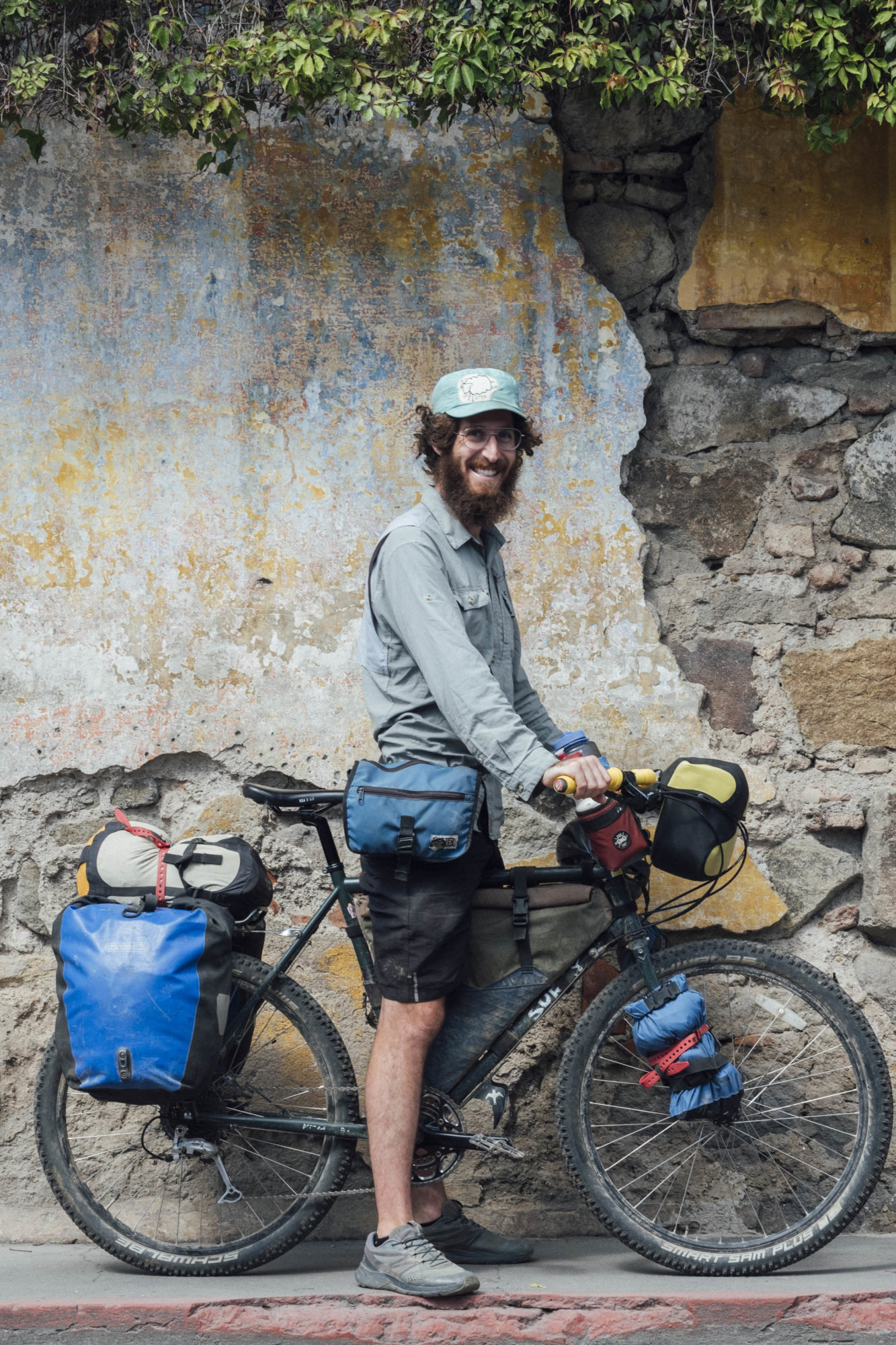
Sometimes, it still feels like we’re forcing our bikes to do something they weren’t made for, but they probably feel the same way about us. We enjoy the challenges of being a bit of a ragtag team as we keep learning about ourselves, our bikes, and our surroundings on our start-and-stop journey south.
Our bikes are feeling more and more like handy tools for the terrain. That was the idea from the beginning, but the word “terrain” has taken on broader significance.
Have these bike modifications changed the dynamics of your trip?
Guatemala felt like the ultimate demonstration of why we’ve taken so much trouble to downsize. We set out on routes we already knew had sections that would be too hard for us to ride, including rutted singletrack and hike-a-bikes. And when we got to them, rather than panting our ways up the trails—okay, maybe in addition to panting—we laughed at how impossible they were.
Those sections brought us to the best parts of our trip: little creeks, endless rolling mountains, shocked locals, and dirt-cheap chocolate-covered frozen fruit. The unknown trails and hand-drawn segments on Ride with GPS are changing from something that had us pointing fingers at each other to photo ops for sliding down coffee worker trails on the sides of mountains. Our bikes are feeling more and more like handy tools for the terrain. That was the idea from the beginning, but the word “terrain” has taken on broader significance.
Otherwise, making changes to our bikes has become a bit of a hobby. We’re sort of scared that we won’t have anything else to talk about once we get the setups completely dialed in!
How do you plan your route?
Since we left Oaxaca, we’ve largely been stitching together the routes from here on BIKEPACKING.com, like the Trans Mexico and the Ruta de Los Cuchamatanes. Thanks! We’re eternally grateful to Mark and Hana for creating them. Otherwise, we generally use Ride with GPS to draw new routes, trying to focus on dirt roads that’ll generally go toward our destinations. Especially in Guatemala and El Salvador, Andrea’s prior knowledge contributes to our route and depth of experience. She’s a budding expert on recognizing the traditional Indigenous clothing from specific regions and has contacts everywhere that help guide us along the way. We usually don’t plan specific routes more than a couple of days at a time, unless it’s someone else’s track we’re following. That may change when we get into South America, where there will be longer open stretches.
We bought a Wahoo GPS unit in Oaxaca that we load the routes into, taking turns to lead the way. Jake’s favorite thing is trying to set new personal records on road grades. We also send the GPX files to our MapOut navigation app, which we consult a couple of dozen times a day. We could probably get away with just using MapOut, but the Wahoo gives us a little lower profile than mounting our phones to the handlebars, and it saves us having to charge our phones all the time.
We try to strike a balance between biking on quiet roads and actually getting to places efficiently. The more we pare down our gear, the less of a compromise that becomes. And we’re finally realizing that it’s worth taking time to really research where we ride. We’re becoming a little less hesitant to draw our own lines connecting roads, and doing a better job of taking steep climbs into account. We used to plan our days around distances, but the amount we climb is now the primary number we consider. And we’re always flexible. If someone tells us there’s a waterfall on a dirt road that we can’t miss, we’ll usually take the detour. But we’ll also bite the bullet and stick to main roads if enough people tell us to be on guard in a specific area.
Aside from the experience of riding a bike across the Americas, which is no small feat in itself, is there anything else you hope to achieve on this journey?
On a basic level, we’re just trying to live in the moment, soak in as much as we can, and continue to learn how to be good partners to the person we’re with 24 hours a day. Jake is always working on his Spanish and trying to eat every single new fruit we come across.
Andrea, right now, is working on building a new relationship with her home. One of the ways she’s doing it is by deeply immersing herself in El Salvador. So much news we hear about Central America creates an unwelcoming image of the region. Of course, the reality is very difficult for many people, but that’s only part of the story. Our trip is much more defined by incredible landscapes and the generosity of people, and we want our experience to contribute to building that narrative.
We’re also hoping we can help amplify the voices and perspectives of the social movements we connect with. Especially in Central America, we want to make sure people in the U.S. who follow us understand the devastating role that the government and private corporations have held—and continue to hold—in the region. United Fruit Company, now Chiquita, may not be hand-picking presidents in Honduras anymore, but the effects of a hundred years of funding death squads and stealing natural resources are long-lasting. The social movements in Latin America are incredibly inspiring and resilient, and we hope we can help them move more people to action in the U.S. That can look like pressuring our government to reverse its policies of destabilizing progressive, Indigenous-led governments, or straight up financially supporting organizations that are doing the hard work of cleaning up the mess left by decades of U.S. neocolonialism.
Andrea is also active in trying to encourage diversity of representation in biking. We don’t get to see a lot of examples of Black and Brown women doing the kind of thing we’re doing, so she’s helping bridge some of those gaps. And she’s trying to do it in a way that includes her unique perspective, rather than simply posting photos of her looking like a badass. Connecting with the amazing people doing that work has been a huge gift for her.
We’ve heard about how your bikes have changed, but how about the two of you?
We’re both still waiting to see those chiseled leg muscles we’d dreamed about, but we are grateful for our overall improved physical condition. We’re both a lot more easygoing about the day-to-day. We don’t always know where we’ll be in a month or a week or that night, and we’ve learned to embrace that. We’ve found that the more psychologically flexible we are, the more likely it is that we’ll stumble across some dumb luck.
Also, we’re either way more into oatmeal than we were before, or more resigned to eating the same thing every morning. And on the subject of food, we’ve seen some pretty terrible mistreatment of animals and a lot of clearing of forests for cattle grazing. Those things have definitely informed our eating habits.
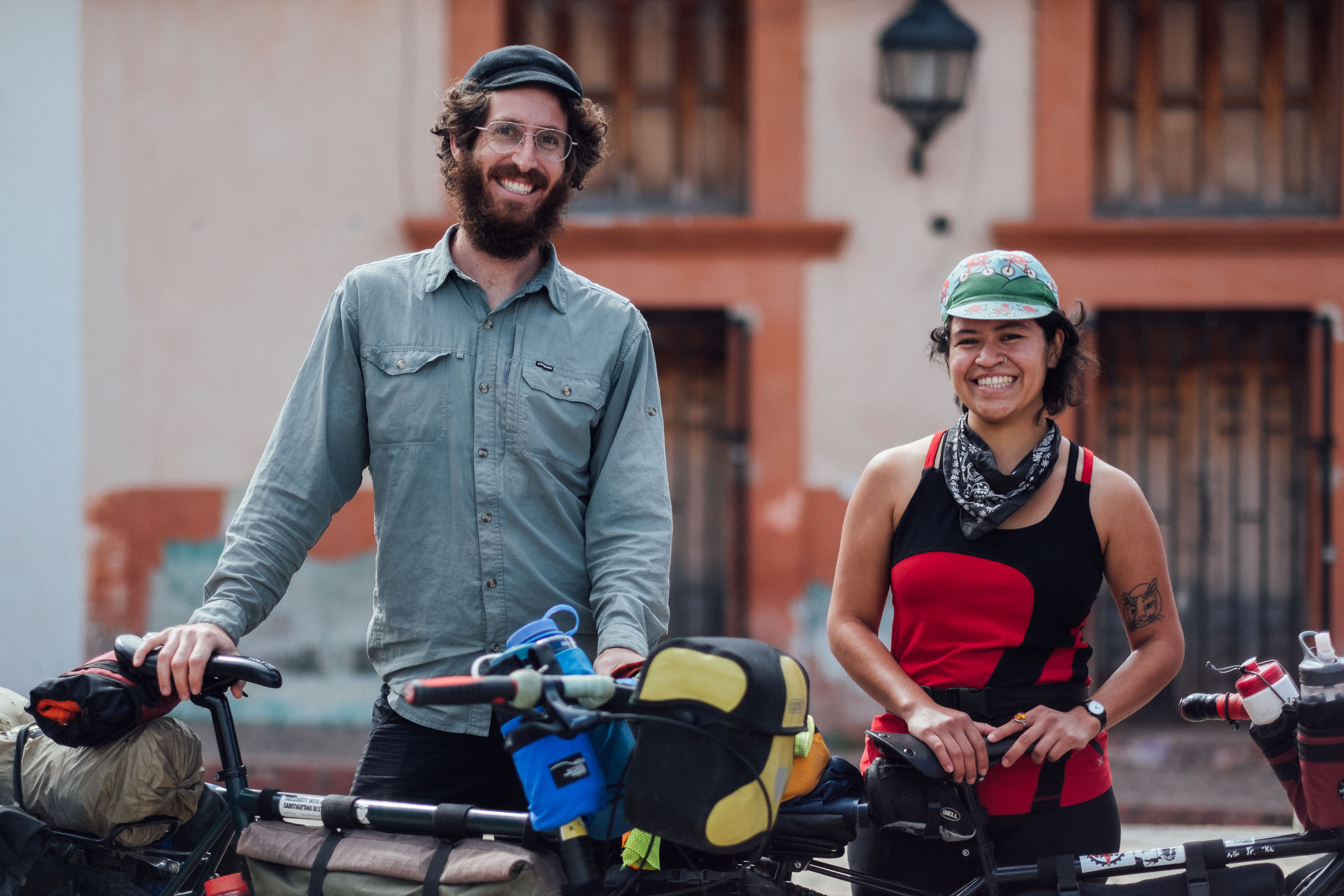
How can people follow your journey?
We’re currently sharing our journey and thoughts through Instagram. Our trip account is @purobiking, and Andrea updates her personal account @molinaire55 at least as often. She’s also starting to share occasional updates through the Swift Industries email list, so you can sign up to follow her on there too. Three separate people have encouraged us to start a YouTube channel in the last week, so maybe that’s in our future as well!
Lastly, can you share some resources that can help inform readers about the immigration crisis in Central America?
ProPublica released a report on the effects of climate change on migration from Central America last year. It paints a really dire picture, and that was before the recent hurricanes (and continuing COVID-related economic crisis) made things even worse. It’s definitely worth reading through. It’s also worth remembering that things don’t necessarily get better for Central American immigrants under Democratic presidents. The Obama administration was responsible for deporting record numbers of people, and there are growing calls for Biden to reunify the families that he was responsible for tearing apart.
There are still active GoFundMe pages for organizations in Honduras and Guatemala that are working on the ground to provide relief to communities that were destroyed by the hurricanes. We can vouch for them all as organizations that have inspired us for years. Readers in Europe can support OFRANEH (The Black Fraternal Organization of Honduras) here.
With thanks to Andrea and Jake for the additional action shots from the Guatemalan segment of their stop-and-start journey south. We look forward to checking in on their ride again later in the year.
Please keep the conversation civil, constructive, and inclusive, or your comment will be removed.






